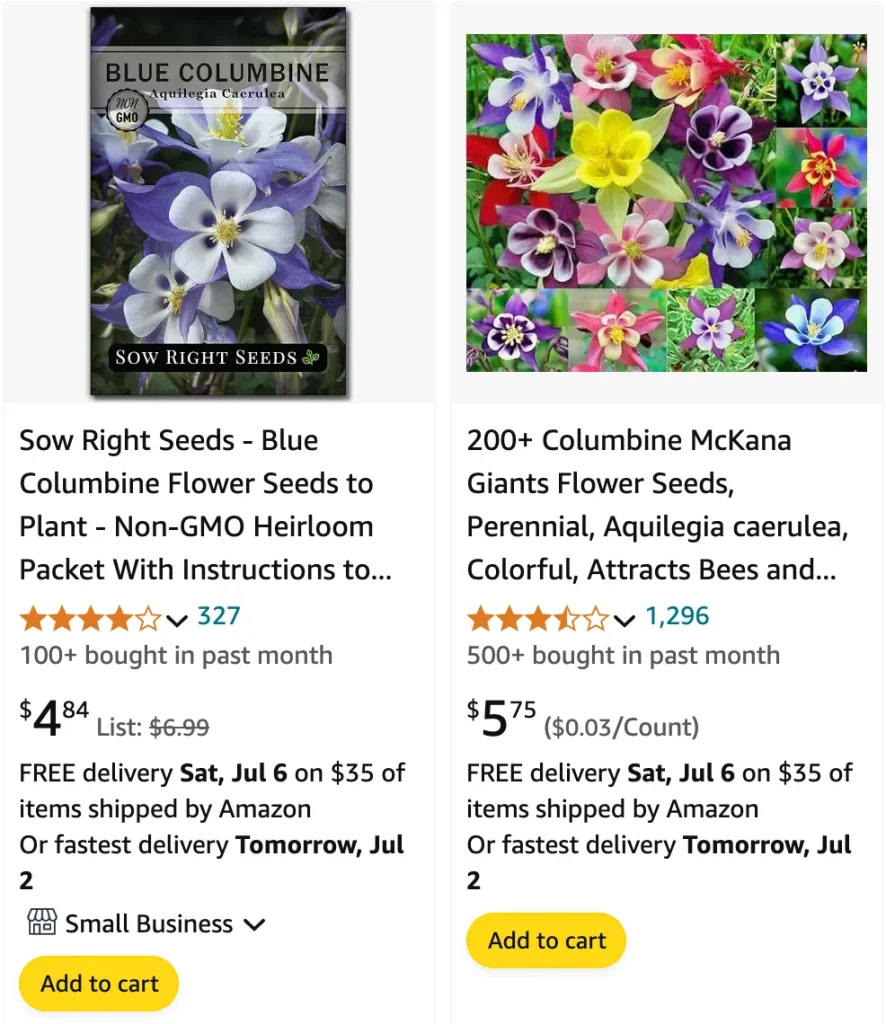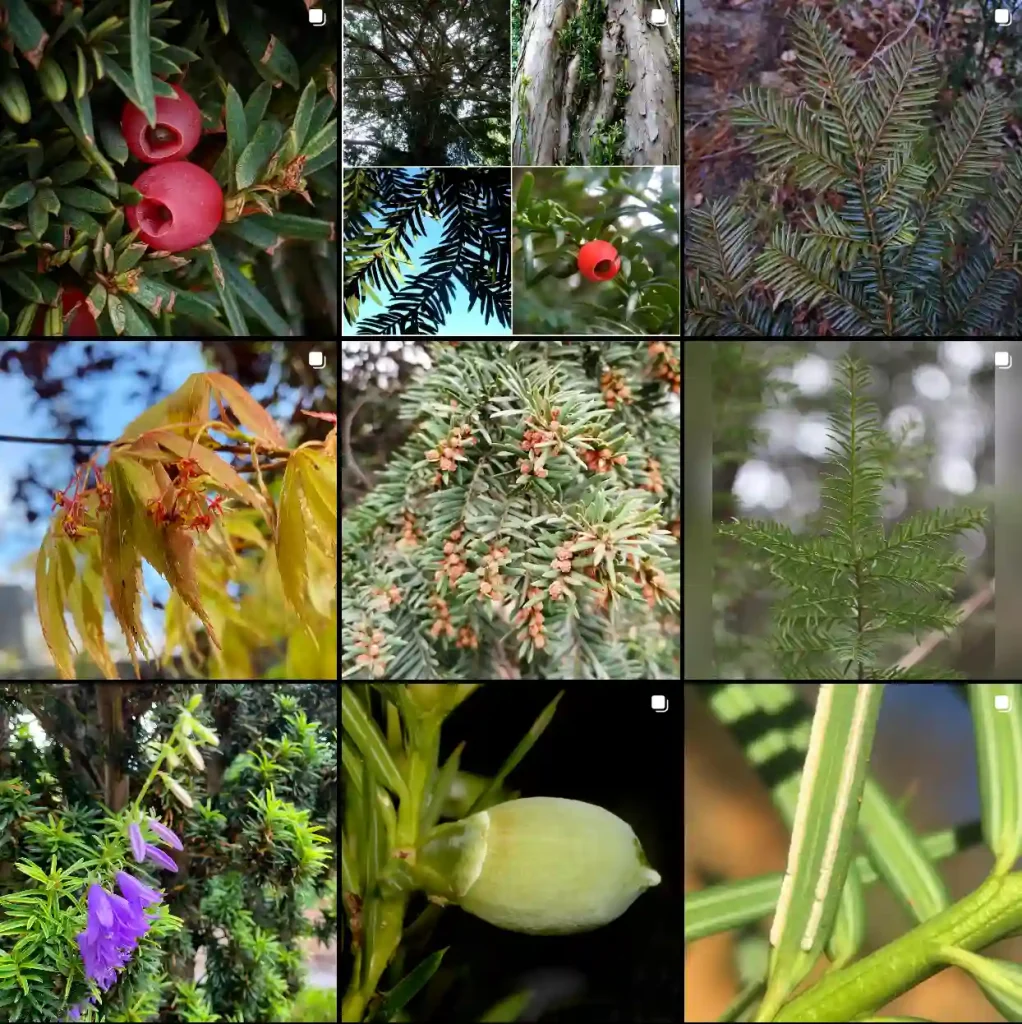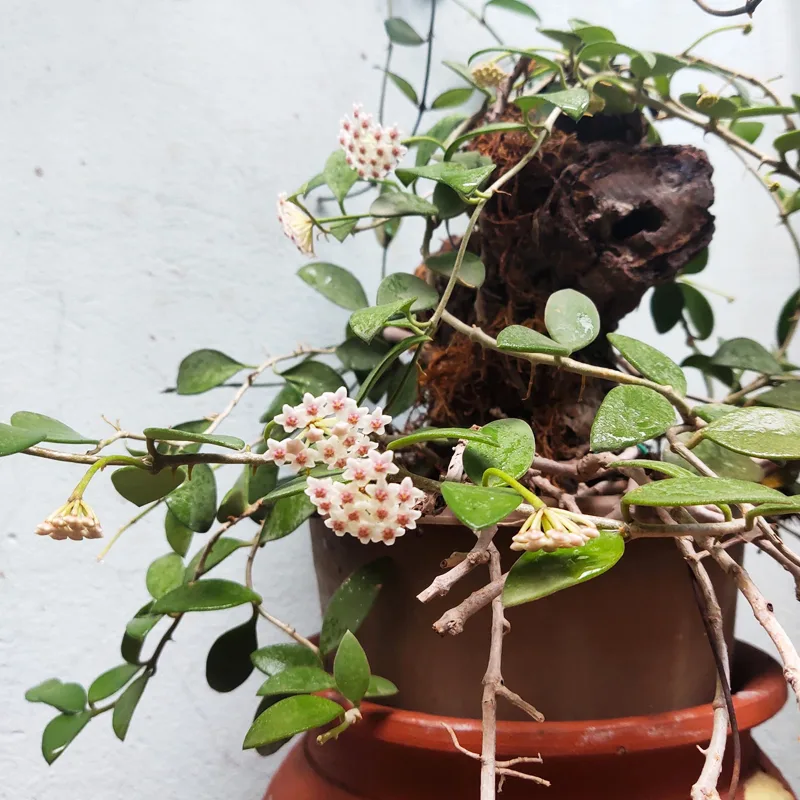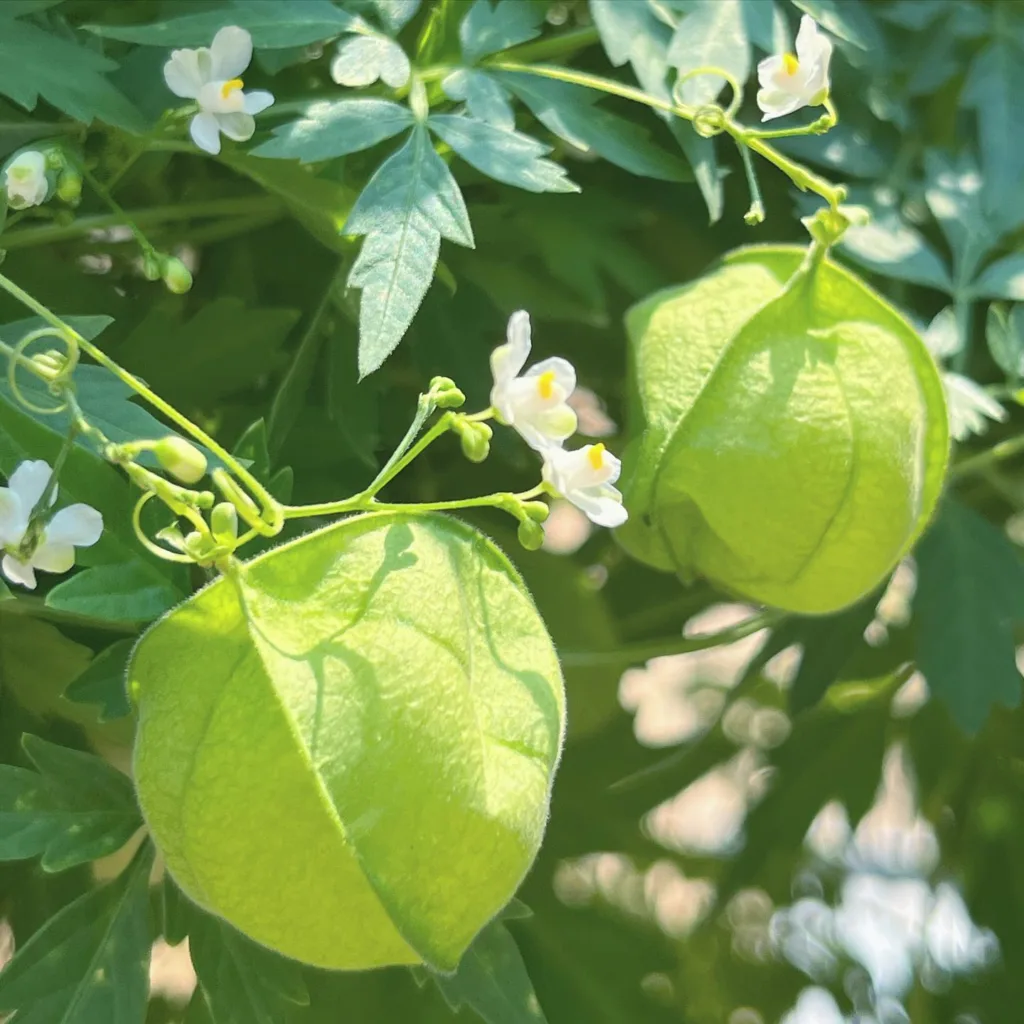
February 9 – Aquilegia
"Aquilegia, the delicate columbine, defines February 9."
Aquilegia’s intricate blooms symbolize wisdom and mystery. Like this flower, you captivate others with your depth and thoughtful nature. Your curiosity about the world is truly inspiring.
Columbine FAQs: A Gardener’s Guide to these Delicate Delights
Columbines have captivated me for years. Their delicate, whimsical blooms and graceful forms add a touch of magic to any garden. But as I delved deeper into their world, I realized there were many questions buzzing around these beauties. So, I decided to gather all I’d learned and share it with fellow columbine enthusiasts. Here’s a breakdown of some of the most common Columbine FAQs:
What is a Columbine Flower?
The Columbine (Aquilegia) is a perennial flowering plant belonging to the Ranunculaceae (buttercup) family. Native to temperate regions of the Northern Hemisphere, there are over 70 Columbine species boasting a dazzling array of colors, from classic blues and purples to vibrant reds, yellows, and even bi-colored varieties.
Aquilegia species
- Aquilegia alpina L. Plant FAQs: Aquilegia Alpina – Alpine Columbine
- Aquilegia amaliae Heldr. ex Boiss.
- Aquilegia apuana (Marchetti) E.Nardi
- Aquilegia aradanica Shaulo & Erst
- Aquilegia aragonensis Willk.
- Aquilegia atrata W.D.J.Koch
- Aquilegia atrovinosa Popov ex Gamajun.
- Aquilegia atwoodii S.L.Welsh
- Aquilegia aurea Janka
- Aquilegia ballii (Litard. & Maire) E.Nardi
- Aquilegia baluchistanica Qureshi & Chaudhri
- Aquilegia barbaricina Arrigoni & E.Nardi
- Aquilegia barnebyi Munz
- Aquilegia barykinae Erst, Karakulov & Luferov
- Aquilegia bashahrica Erst
- Aquilegia bernardii Gren. & Godr.
- Aquilegia bertolonii Schott
- Aquilegia blecicii A.Podob.
- Aquilegia borodinii Schischk.
- Aquilegia brevistyla Hook.
- Aquilegia buergeriana Siebold & Zucc.
- Aquilegia canadensis L. Plant FAQs: Aquilegia Canadensis
- Aquilegia cazorlensis Heywood
- Aquilegia champagnatii Moraldo, Nardi & la Valva
- Aquilegia chaplinei Standl. ex Payson
- Aquilegia chitralensis Qureshi & Chaudhri
- Aquilegia chrysantha A.Gray Plant FAQs: Aquilegia Chrysantha – Golden Columbine
- Aquilegia coerulea E.James
- Aquilegia colchica Kem.-Nath.
- Aquilegia confusa Rota
- Aquilegia cossoniana (Maire & Sennen) Rivas Mart.
- Aquilegia × cottia Beyer
- Aquilegia cremnophila Bacch., Brullo, Congiu, Fenu, J.L.Garrido & Mattana
- Aquilegia cymosa Qureshi & Chaudhri
- Aquilegia daingolica Erst & Shaulo
- Aquilegia desertorum (M.E.Jones) Cockerell ex A.Heller
- Aquilegia desolaticola S.L.Welsh & N.D.Atwood
- Aquilegia dichroa Freyn
- Aquilegia dinarica Beck
- Aquilegia discolor Levier & Leresche
- Aquilegia dumeticola Jord.
- Aquilegia ecalcarata Maxim.
- Aquilegia einseleana F.W.Schultz
- Aquilegia elegantula Greene
- Aquilegia × emodi Erst
- Aquilegia eximia Van Houtte ex Planch.
- Aquilegia flabellata Siebold & Zucc.
- Aquilegia flavescens S.Watson
- Aquilegia formosa Fisch. ex DC. Plant FAQs: Aquilegia Formosa – Western Columbine
- Aquilegia fosteri (S.L.Welsh) S.L.Welsh
- Aquilegia fragrans Benth.
- Aquilegia ganboldii Kamelin & Gubanov
- Aquilegia gegica Jabr.-Kolak.
- Aquilegia glandulosa Fisch. ex Link.
- Aquilegia gracillima Rech.f.
- Aquilegia grata Maly ex Zimmeter
- Aquilegia grubovii Erst, Luferov, Wei Wang & K.l.Xiang
- Aquilegia guarensis Losa
- Aquilegia hebeica Erst
- Aquilegia hinckleyana Munz
- Aquilegia hirsutissima Timb.-Lagr. ex Gariod
- Aquilegia hispanica (Willk.) Borbás
- Aquilegia holmgrenii S.L.Welsh & N.D.Atwood
- Aquilegia incurvata P.K.Hsiao
- Aquilegia iulia E.Nardi
- Aquilegia jonesii Parry
- Aquilegia kamelinii Erst, Shaulo & Shmakov
- Aquilegia kanawarensis Jacquem. ex Cambess.
- Aquilegia kansuensis (Brühl) Erst
- Aquilegia karatavica Mikeschin
- Aquilegia karelinii (Baker) O.Fedtsch. & B.Fedtsch.
- Aquilegia kitaibelii Schott
- Aquilegia kozakii Masam.
- Aquilegia kubanica I.M.Vassiljeva
- Aquilegia lactiflora Kar. & Kir.
- Aquilegia laramiensis A.Nelson
- Aquilegia litardierei Briq.
- Aquilegia longissima A.Gray ex S.Watson
- Aquilegia lucensis E.Nardi
- Aquilegia magellensis F.Conti & Soldano
- Aquilegia maimanica Rech.f.
- Aquilegia marcelliana E.Nardi
- Aquilegia × maruyamana Kitam.
- Aquilegia meridionalis (Quézel & Contandr.) E.Nardi
- Aquilegia micrantha Eastw.
- Aquilegia microcentra Rech.f.
- Aquilegia × miniana (J.F.Macbr. & Payson) Cronk
- Aquilegia montsicciana Font Quer
- Aquilegia moorcroftiana Wall. ex Royle
- Aquilegia nevadensis Boiss. & Reut.
- Aquilegia nigricans Baumg.
- Aquilegia nikolicii Niketić & Cikovak
- Aquilegia nivalis (Falc. ex Brühl) J.R.Drumm. & Hutch.
- Aquilegia nugorensis Arrigoni & E.Nardi
- Aquilegia nuragica Arrigoni & E.Nardi
- Aquilegia ochotensis Vorosch.
- Aquilegia × oenipontana A.Kern. ex Riedl
- Aquilegia olympica Boiss.
- Aquilegia ophiolithica Barberis & E.Nardi
- Aquilegia ottonis Orph. ex Boiss.
- Aquilegia oxysepala Trautv. & C.A.Mey.
- Aquilegia pancicii Degen
- Aquilegia parviflora Ledeb.
- Aquilegia paui Font Quer
- Aquilegia pubescens Coville
- Aquilegia pubiflora Wall. ex Royle
- Aquilegia pyrenaica DC.
- Aquilegia reuteri Boiss.
- Aquilegia rockii Munz
- Aquilegia saxifraga Casim.-Sor.Solanas & Cabezudo
- Aquilegia saximontana Rydb. Plant FAQs: Aquilegia Saximontana – Rocky Mountain Columbine
- Aquilegia scopulorum Tidestr.
- Aquilegia shockleyi Eastw.
- Aquilegia sibirica Lam.
- Aquilegia sicula (Strobl) E.Nardi
- Aquilegia skinneri Hook.
- Aquilegia sternbergii Rchb.
- Aquilegia subscaposa Borbás
- Aquilegia synakensis Shaulo & Erst
- Aquilegia taygetea Orph.
- Aquilegia tianschanica Butkov
- Aquilegia transsilvanica Schur
- Aquilegia turczaninowii Kamelin & Gubanov
- Aquilegia tuvinica I.M.Vassiljeva
- Aquilegia ullepitschii Pax
- Aquilegia vicaria Nevski
- Aquilegia viridiflora Pall.
- Aquilegia viscosa Gouan
- Aquilegia vitalii Gamajun.
- Aquilegia vulgaris L. Plant FAQs: Aquilegia Vulgaris
- Aquilegia wittmanniana Steven ex Fisch., C.A.Mey. & Avé-Lall.
- Aquilegia xinjiangensis Erst
- Aquilegia yabeana Kitag.
- Aquilegia yangii Y.Luo & Lu Li
- Aquilegia zapateri Pau
How to Care for Columbines?
Caring for Columbines is relatively simple. They thrive in well-drained soil with some organic matter mixed in. Aim for partial shade, especially in hotter climates, as they prefer cooler temperatures. Consistent moisture is key, particularly during the first year of growth. Water deeply at the base of the plant, avoiding overhead watering which can promote fungal diseases.
How to Propagate Columbines?
There are two main ways to propagate Columbines: by seed or division. Seed propagation takes longer, with blooms appearing in the second or third year. Sow seeds directly outdoors in early fall or spring. Division is a faster method, allowing established plants to be split and replanted. The best time for division is in early spring or fall.
What to Plant with Columbines?
Columbines pair beautifully with a variety of shade-loving companions. Hostas provide a lush backdrop, while ferns add texture and visual interest. Consider adding foxgloves for vertical height or bleeding hearts for a touch of whimsy.
Do Deer Eat Columbine?
Good news, deer tend to leave Columbines alone! This makes them a great choice for gardens frequented by these browsing herbivores.
How to Grow Columbine?
As mentioned earlier, Columbines prefer cool, moist conditions with well-drained soil. Here’s a quick guide to growing them:
- Choose a location: Select a spot with partial shade, especially in warmer regions. Full sun is acceptable in cooler climates during spring.
- Prepare the soil: Amend the soil with compost or aged manure for added drainage and nutrients.
- Planting: Sow seeds directly outdoors in early fall or spring, or transplant established Columbines at the same time.
- Watering: Water deeply and regularly, especially during the first year.
- Deadheading: Remove spent flowers to encourage reblooming.
Is Columbine Poisonous to Dogs?
Unfortunately, yes. All parts of the Columbine plant are toxic to dogs and can cause serious illness if ingested. If you suspect your dog has eaten Columbine, contact your veterinarian immediately.
Do You Deadhead Columbines?
Deadheading, or removing spent flowers, is not mandatory but can encourage reblooming. Simply pinch off the flower head where the stem meets the main stalk. This will prevent the plant from setting seed and redirect its energy towards producing additional blooms.
Are Columbines Perennial?
Yes! Columbines are perennials, meaning they return year after year after an initial establishment period. With proper care, they can grace your garden for many seasons to come.
Where Do Columbines Grow?
Columbines are native to temperate regions of the Northern Hemisphere, particularly in North America, Europe, and Asia. However, with proper care, they can be grown successfully in many areas around the world.
Do Hummingbirds Like Columbine?
Absolutely! Hummingbirds are drawn to the Columbine’s nectar-rich, trumpet-shaped flowers. These delicate beauties become a delightful hummingbird haven in the garden.
Is Columbine Edible?
While Columbines are undeniably beautiful, they are not edible. In fact, all parts of the plant are toxic and can cause gastrointestinal distress if ingested.
Can Columbine Be Grown in Pots?
Yes, Columbines can be grown in pots, but they require a container with good drainage and adequate size. Choose a pot that’s at least 12 inches deep to accommodate their root system. Ensure the potting mix is well-draining and water regularly, especially during hot weather.
Can Columbine Grow in Shade?
Columbines prefer partial shade, especially in hot climates. They can tolerate full sun in cooler areas during spring but appreciate afternoon shade during the summer heat.
Is Columbine Poisonous to Cats?
Similar to dogs, yes, Columbines are toxic to cats. All parts of the plant can cause illness if ingested. Keep an eye on your feline companions and ensure they can’t access these beautiful but potentially harmful flowers.
Are Columbine Flowers Invasive?
Generally, Columbines are not considered invasive. They tend to self-seed moderately, but not aggressively. In fact, their volunteer seedlings can be a delightful surprise in your garden! However, it’s always a good idea to monitor their spread and remove unwanted seedlings before they mature.
Do Columbines Have Any Diseases or Pests?
Columbines are relatively disease and pest-resistant. However, they can be susceptible to fungal diseases like powdery mildew, especially in humid conditions. Ensure good air circulation around the plants and avoid overhead watering. Fungal gnats may also occasionally bother Columbines. If you notice an infestation, insecticidal soap can be a helpful solution.
How Long Do Columbine Flowers Last?
Individual Columbine blooms typically last for a week or two. However, with deadheading to encourage reblooming, you can extend the flowering season for several weeks throughout late spring and early summer.
Can I Cut Columbines for Arrangements?
Absolutely! Columbines make stunning cut flowers. To maximize vase life, cut stems early in the morning when the flowers are cool and fully open. Place them in a clean vase with cool water and add a floral preservative if available.
Where Can I Learn More About Columbines?
There are many resources available online and in libraries dedicated to gardening and specific plant varieties. Local gardening clubs or societies can also be a great source of information and connect you with fellow Columbine enthusiasts.
By understanding these FAQs, you can successfully cultivate these captivating flowers and bring a touch of elegance and whimsy to your garden. Happy planting!
If i die, water my plants!



